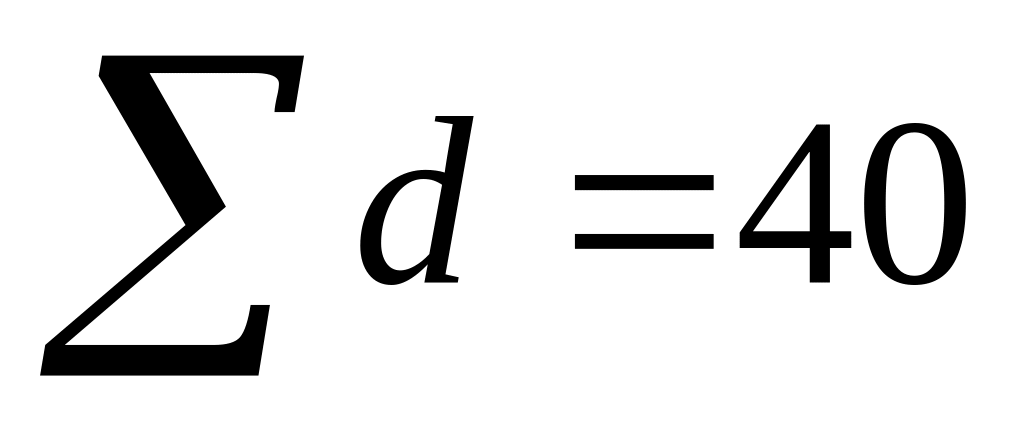
- •Interval estimation
- •6.1. Introduction
- •6.2. Confidence interval and confidence level
- •6.3. Confidence intervals for the mean of population that is
- •6.4. Confidence intervals for the mean of population that is
- •6.5. Confidence intervals for the mean of a normal distribution:
- •6.5.1. Student’s t distribution
- •6.5.2. Confidence interval for : small samples
- •6.6. Confidence intervals for population proportion: Large samples
- •6.7. Confidence intervals for the difference between
- •6.7.1. Confidence intervals for the difference between
- •6.7.2. Confidence intervals for the difference between
- •6. 8. Confidence interval for the difference between the population means: unknown population variances that are assumed to be equal
- •6. 9. Confidence interval for the difference between the
- •6. 10. Confidence interval for the variance of a normal
- •6.11. Sample size determination
- •6.11.1. Sample size determination for the estimation of mean
- •6.11.2. Sample size determination for the estimation of proportion
6.7. Confidence intervals for the difference between
means of two normal populations
Let
![]() be
the mean of the first population and
be
the mean of the first population and
![]() be
the mean of the second population. Suppose we want to make a
confidence interval for the difference between these two population
means, that is,
be
the mean of the second population. Suppose we want to make a
confidence interval for the difference between these two population
means, that is,
![]() .
.
Let
be
the mean of a sample from the first population and
![]() be
the mean
be
the mean
of
a sample taken from the second population. Then
![]() is
the sample statistic that is used to make an interval estimate. We
will consider several cases.
is
the sample statistic that is used to make an interval estimate. We
will consider several cases.
6.7.1. Confidence intervals for the difference between
means: paired samples
In the case of two dependent samples, two data values-one in each sample- are collected from the same source and these are called paired or matched pairs.
Suppose
that n
matched pairs of observations, denoted by
![]()
![]() ,
are selected from two populations with means
and
.
,
are selected from two populations with means
and
.
Our
aim is to find
confidence
interval for![]() .
.
To find interval estimation we apply following steps:
1.
Find n
differences
![]()
2.
Find
![]()
3.
Calculate
![]()
If the population distribution of differences is assumed to be normal, then
confidence interval for the difference between means is given by
![]()
where is the number for which
![]()
The random variable has a Student’s t distribution with ( n -1 ) degrees of freedom.
Example:
A company claims that its special exercise program significantly reduces weight. A random sample of seven persons were put on exercise program. The following table gives the weights (in kg) of those seven persons before and after the program
Before |
68 |
81 |
98 |
86 |
110 |
92 |
80 |
After |
62 |
76 |
86 |
79 |
103 |
87 |
82 |
Make a 95 % confidence interval for the mean of the population paired differences. Assume that the population of paired differences is (approximately) normally distributed.
Solution:
Let d be the difference between the weights before and after the program.
The necessary calculations are shown in the following table
-
Before
After
Difference


68
81
98
86
110
92
80
62
76
86
79
103
87
82
6
5
12
7
7
5
-2
36
25
144
49
49
25
4


The values of and are calculated as follows:
![]()
![]() .
.
Then
and
![]() .
.
In the end, 90 % confidence interval for is
![]()
![]()
Thus, we can state with 90 % confidence that the mean difference between the weights before and after exercise program is between 2.6 and 8.82 kg.
Exercises
1. Find the following confidence interval for the difference between two population means assuming that the populations of paired differences are normally distributed
a)
n
=10 ![]() ;
; ![]() ; confidence
level = 99 %
; confidence
level = 99 %
b)
n
=26 ![]() ;
; ![]() ; confidence
level = 95 %
; confidence
level = 95 %
c)
n
=14 ![]() ;
; ![]() ; confidence
level = 90 %
; confidence
level = 90 %
2. A company attempts to evaluate the potential for a new bonus plan by selecting a random sample of 5 salespersons to use the bonus plan for a week period. The weekly sales volumes before and after the bonus plan implementation shown below
Weekly sales Before |
Weekly sales After |
15 12 18 15 16 |
18 14 19 18 18 |
Construct a 90 % confidence estimate for the mean increase in weekly sales that can be expected if a new bonus plan is implemented.
3. A company claims that the course they offer significantly increases the writing speed of secretaries. The following table gives the scores of eight secretaries before and after they attended this course.
Before |
81 |
75 |
89 |
91 |
65 |
70 |
90 |
69 |
After |
97 |
72 |
93 |
110 |
78 |
69 |
115 |
75 |
Make a 90 % confidence interval for the mean of the population paired differences, where a paired differences is equal to the score before attending the course minus the score after attending the course.
4. A company sent 7 of its employees to attend a course in building self-confidence. The following table gives the scores of these employees before and after attending the course
Before |
8 |
5 |
4 |
9 |
6 |
8 |
5 |
After |
10 |
7 |
5 |
11 |
6 |
7 |
9 |
Construct a 95 % confidence interval for the mean of population paired differences where a paired difference is equal to the score of an employee before attending the course minus after attending this course.
Answers
1. a) (10.65; 36.55); b) (11.26; 15.14); c) (39.76; 52.64); 2. 1.40 to 3.00;
3. (-16.54; -3.21); 4.(-2.93; 0.07).
